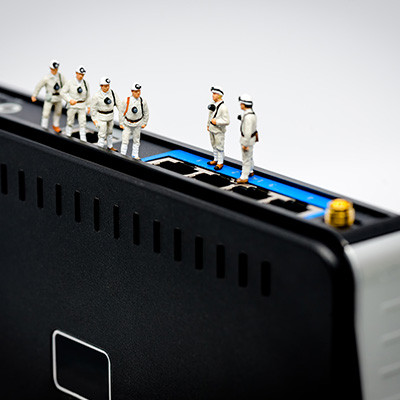Connecting Your Office
The modern office functions a lot like the office of twenty years ago in terms of networking. Most of the time, endpoints connect to switches that connect to routers that connects to servers and the internet. This has been the way it has been for a couple of decades. Sure, the technology itself has been improved drastically, bandwidth dwarfs older connection speed, but all-in-all it is pretty similar to the way that office networking has been structured for some time.
One major change is the reliance on Wi-Fi. Wireless internet provides a more flexible work environment, giving staff a better ability to collaborate through the use of mobile devices such as laptops and smartphones. The integration of wireless connections necessitates the integration of security infrastructure and policies that work to keep unauthorized entities off of the business’ computing network.
What Is Changing?
You can count on one hand the inventions that have had the type of impact that the Internet has had on modern society. It’s no secret that there is a worldwide push for ubiquitous Internet access. This push will no-doubt be felt inside the offices of businesses big and small for years to come. There are new considerations coming to the forefront of networking technology. Some of which promise to change the way networking works. These include:
Improvements to Wi-Fi
Wi-Fi 6, or 802.11ax, upgrades the current highest-speed Wi-Fi available, 802.11ac. It brings a substantial improvement in efficiency across all current Wi-Fi bands, including older frequencies, such as 2.4 GHz. The biggest improvement Wi-Fi 6 brings is it increases the density of devices that can co-exist in a single space, increasing the networking speed on all devices.
Additionally, Wi-Fi 6 will improve performance by supporting packet scheduling that will make for dramatic improvements in power utilization by mobile devices. This will improve the wireless experience for every user and will substantially improve the way the Internet of Things is leveraged in the workplace.
Improvements to Wireless Mobile Networks
If you haven’t heard about 5G yet, you will. The fifth-generation wireless network is going to be a game changer. Wireless carriers are beginning to roll out 5G slowly and manufacturers have balked at going all-in on building 5G devices, but soon 5G will be the predominant wireless Internet platform and it will change everything.
5G will bring improved speed and battery life to smartphones and expand high-speed Internet for home users.
For the business, 5G will have less of an impact, but it will have one. 5G fixed access will be a useful option as a WAN connection for organizations that have multiple branches. Additionally, as 5G rolls out, it will present more opportunities for organizations to leverage the Internet of Things in new and useful ways.
Smarter Networking
In managing a modern network, administrators need powerful tools to be able to make everything play nice together. This type of coordination, especially as new wireless technologies take hold, needs to happen in real time. Businesses will start to use machine learning to learn more about all aspects of their network. In doing so they will be able to prioritize the efficiency of their networks.
Machine learning, a type of artificial intelligence, will help push this along by optimizing network performance, enhance security, and do it at a reduced cost. It accomplishes this through strong pattern identification that will reduce the amount of time and effort spent by administrators on issues that aren’t critical in nature.
The immediate future will see gains in the way businesses and individuals are able to share, collaborate, and produce. If you are looking for some more information about innovative new networking technologies and how they can work to help your organization, call us today at (604) 513-9428.




